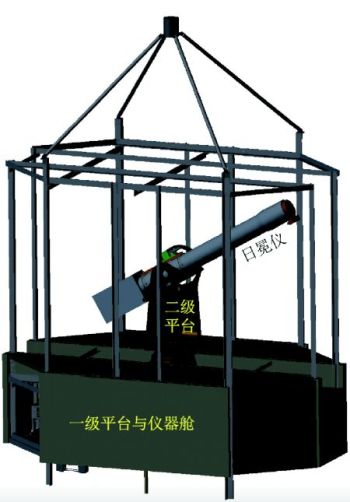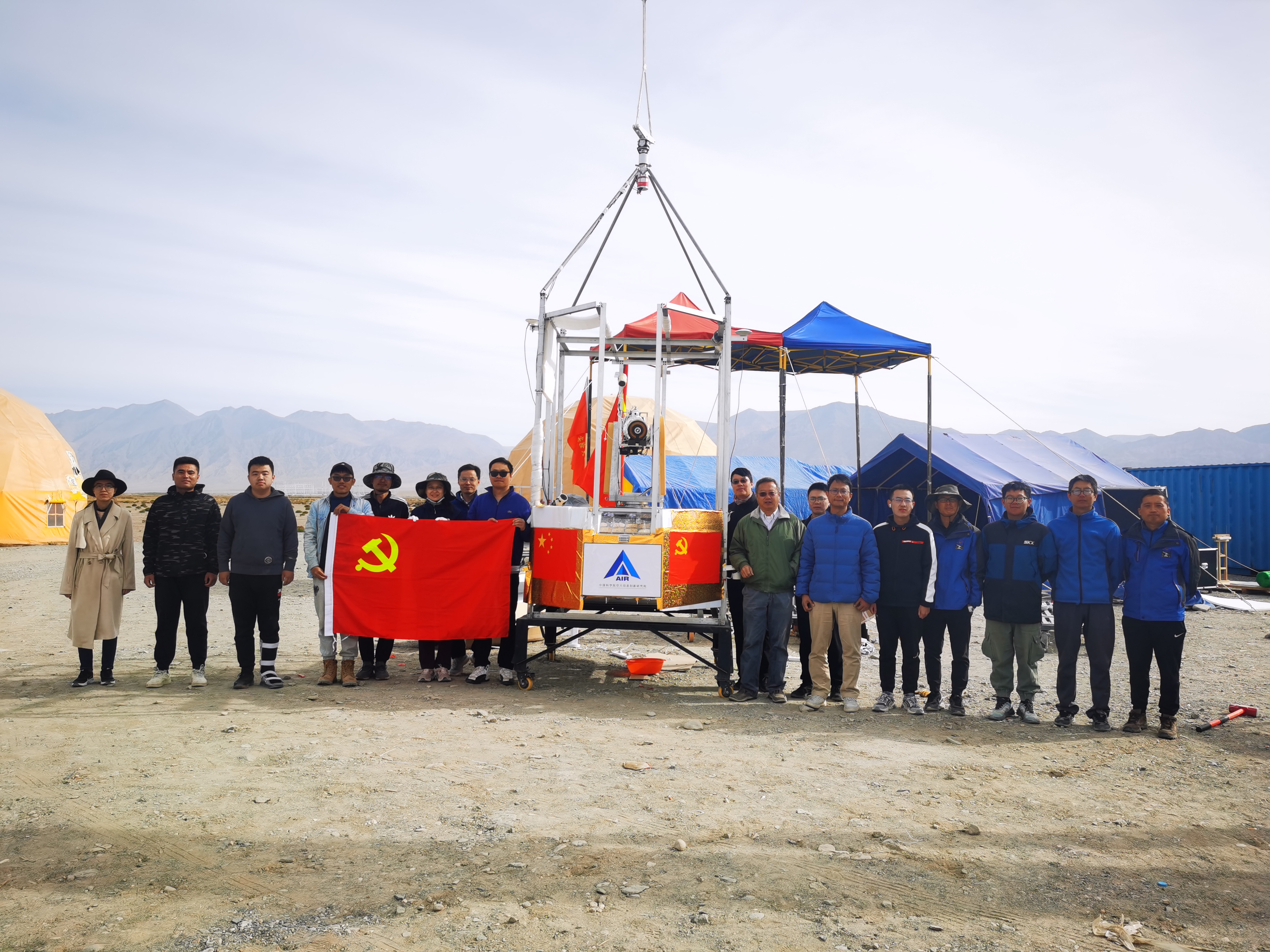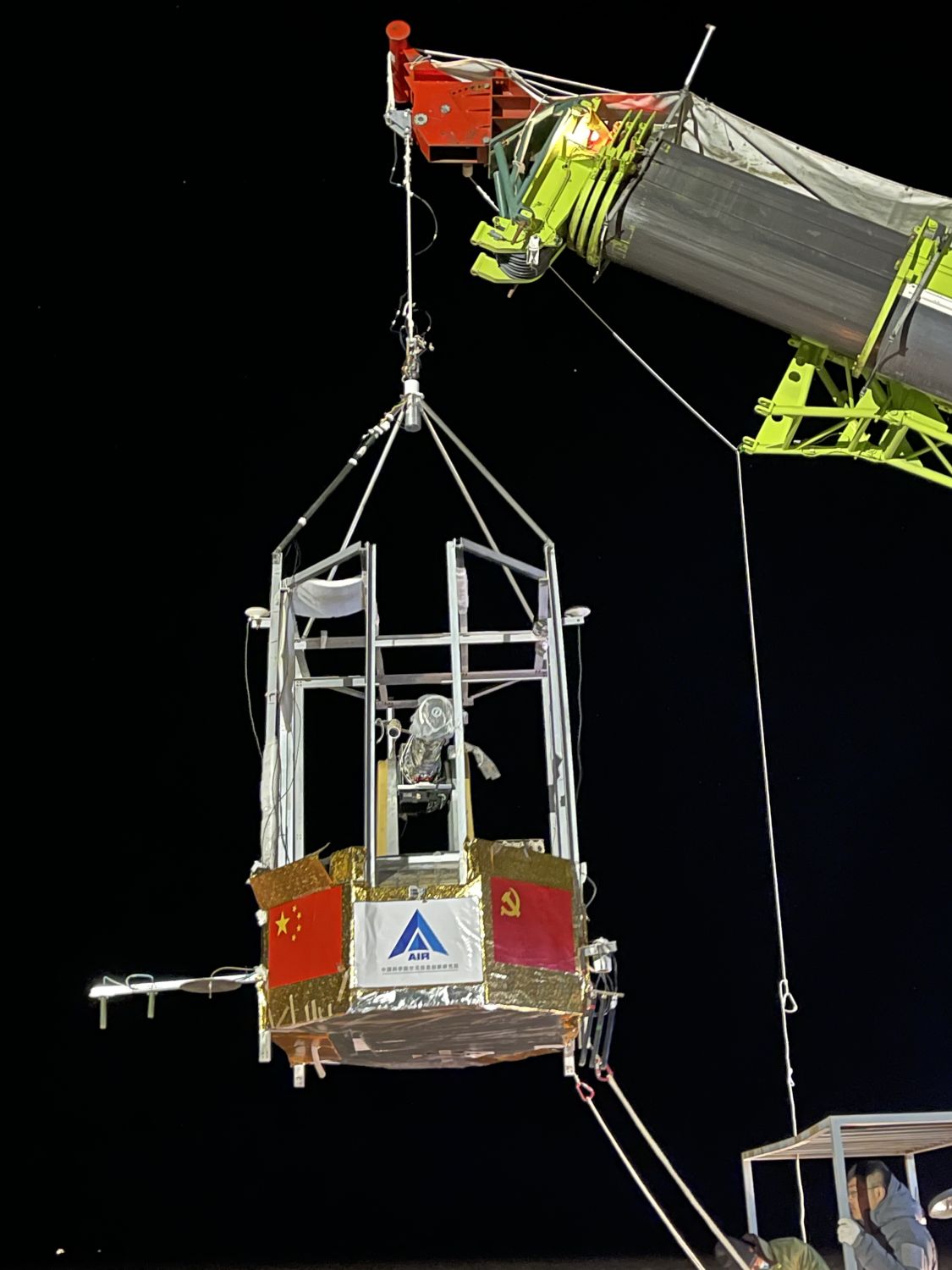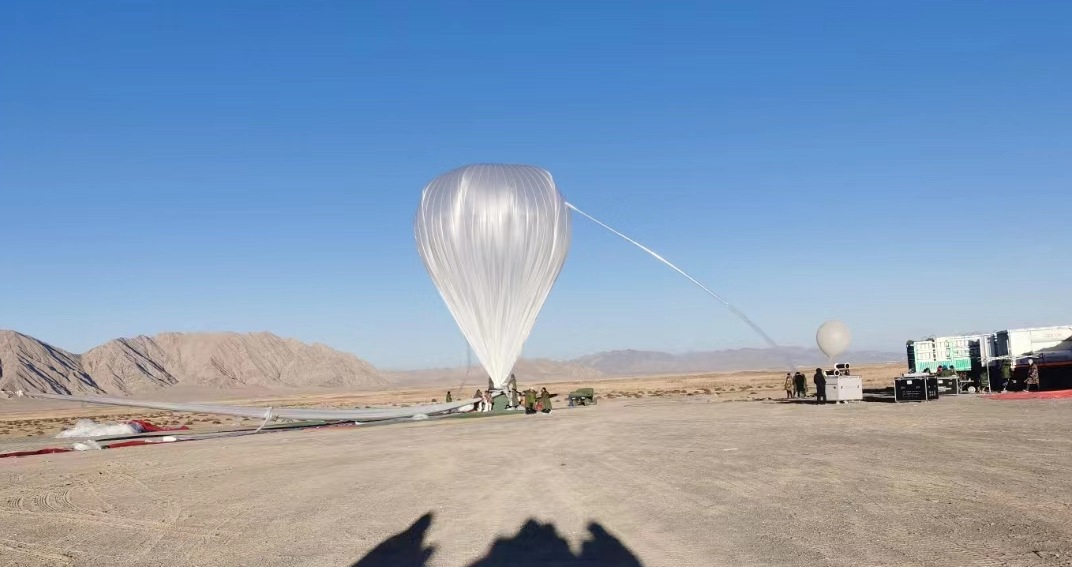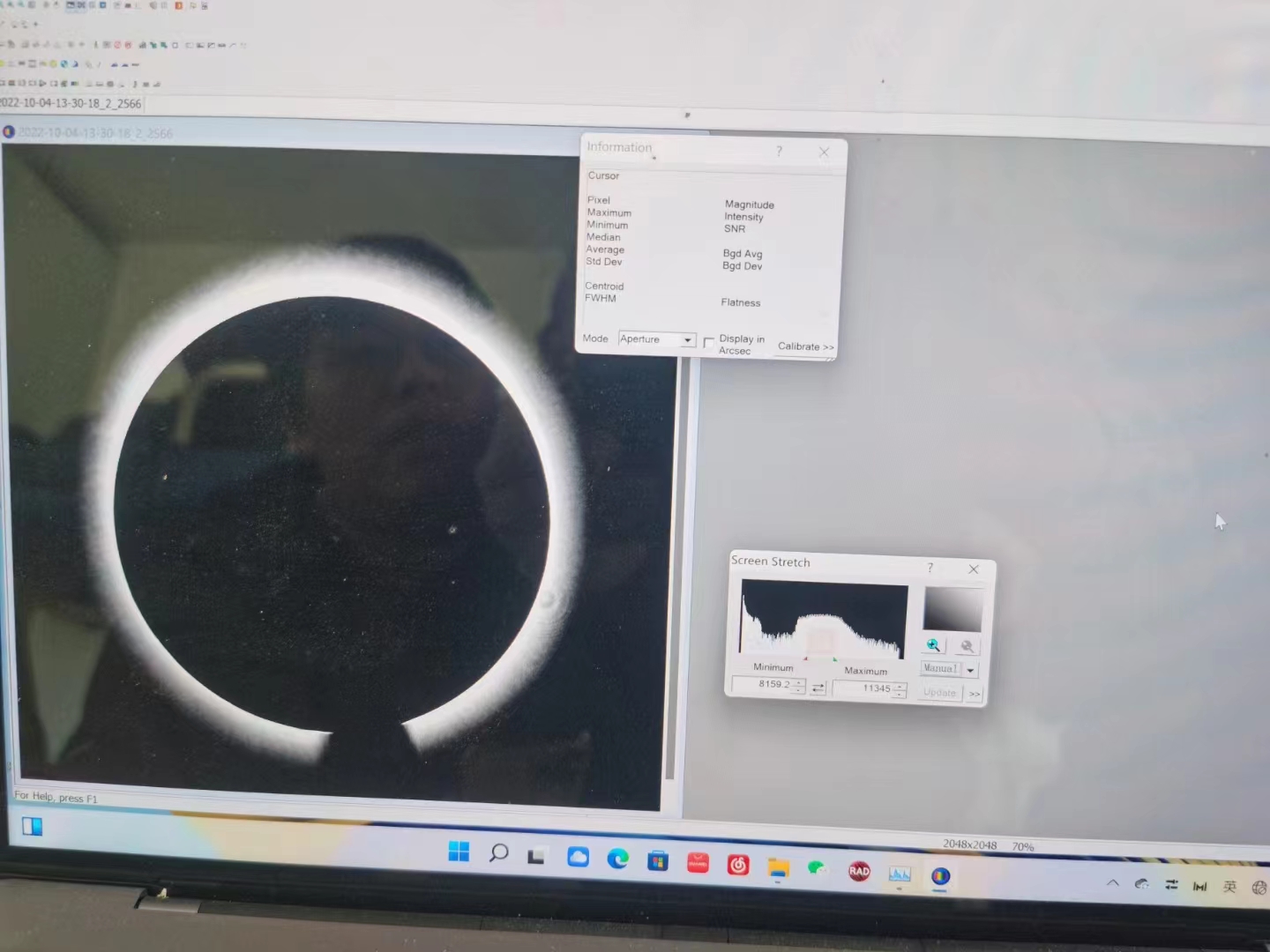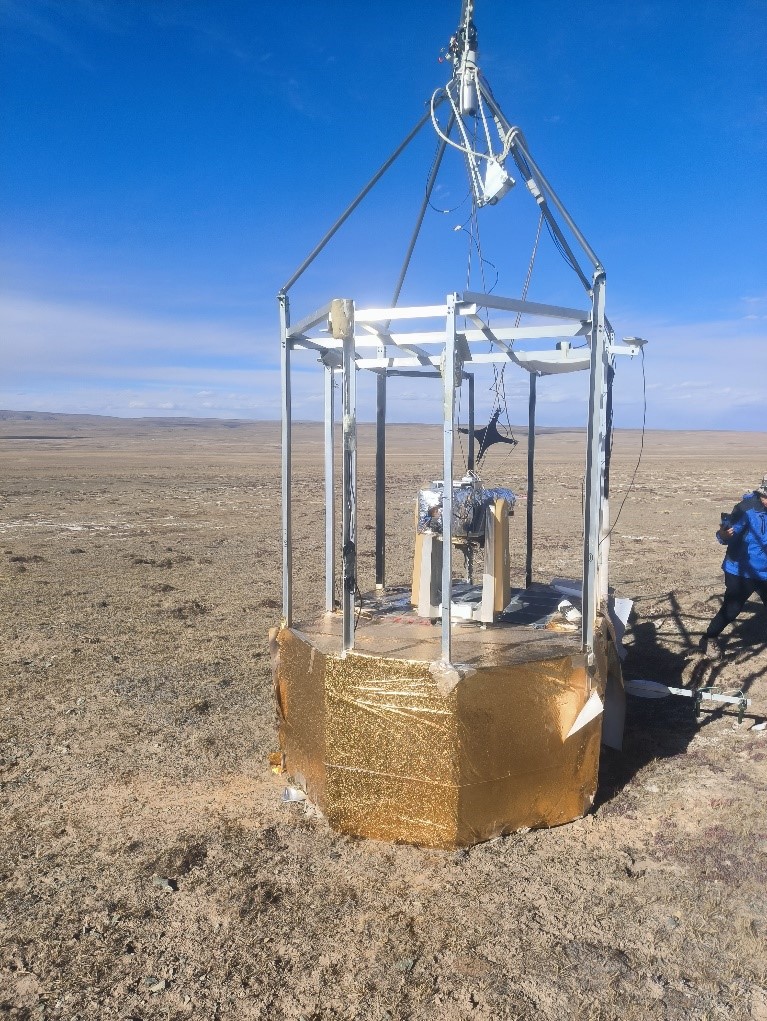Purpose of the flight and payload description
The objective of the flight was to transport to the stratosphere a 50-mm balloon-borne white-light coronagraph aimed to perform white-light observations of the inner corona from near-space. The instrument is an internally occulted Lyot coronagraph developed by Yunnan Observatories in collaboration with Shangdong University (in Weihai) and Changchun Institute of Optics, Fine Mechanics and Physics. The main scientific purpose for developing this coronagraph is to investigate the morphology and dynamics of low-layer coronal structures before and during solar eruptions by observing at a float altitude of about 30 km.
The instrument that we can see in a basic scheme in the figure at left (click to enlarge) consists of three parts: the primary platform and instrument cabin, the secondary platform, and the coronagraph. The primary platform carries the coronagraph and all loads related to the coronagraph observation, including the power supply, communication equipment, industrial computers, gyroscopes, solar sensors and secondary platform. The upper end of the first-level platform is connected to the balloon through cables and parachutes. After the observation is completed, the connection between the balloon and the parachute is cut off, and the entire system is brought back to the ground for a safe landing. The power supply provides energy for operating all equipment on the platform, the communication equipment allows command reception and data transmission from/to the ground, and the onboard industrial computer controls the operation of various equipments in the system. A gyroscope is responsible for maintaining the stability of the first-level platform in the horizontal direction, while an special system finds the sun.
The secondary platform is a horizontal support. The coronagraph system, including observation equipment and data acquisition equipment, is installed on the secondary platform. In principle, the secondary platform can allow the coronagraph system to rotate 360 degrees horizontally, pitch angle up and down and rotation. Once the first-level platform finds the sun in the horizontal direction, it only need to operate the second-level platform to point the telescope in that direction, and then just adjust the pointing within the range. As the sun can be only observed when it appears above the horizon, the pitch angle of the coronagraph must be between 0 and 90 degrees. Then by fine-tuning the azimuth angle, the sun can be accurately positioned.
The coronagraph itself is composed by a telescope with an aperture of 50 mm with complete K-corona imaging function. The imaging system includes the optical imaging lens group, mechanical structure, filter, polarizer, electric polarization wheel and a sCMOS camera. Among them, the electric polarization wheel is a 6 Hole polarizing wheel, of which 4 holes are polarizing plates, 1 hole is a flat plate, and 1 hole is a blocking plate for dark field measurements. The coronagraph have an inner field of view of 1.1 solar radii and an outer field of view of 1.5 solar radii. The wavelength is 5500 Armstrong, the transmission bandwidth (FWHM) is 50 Armstrong, the effective focal length of the system is 1587 mm, and the external size of the coronagraph is 210 mm x 205 mm x 1900 mm.
The reason for choosing 5500 Armstrong as the working wavelength is that 5500 Armstrong is the most sensitive wavelength of the human eye and is also the wavelength where the solar radiation is strongest. On the other hand, this coronagraph uses a shield inside the lens tube to block direct sunlight. Since the objective lens of the internally shielded coronagraph can only be in the form of a single lens, it cannot eliminate chromatic aberration. Taking into account the focal length of the objective lens and the occlusion angle of the inner field of view, the transmission bandwidth is selected to be 50 Armstrong.
Details of the balloon flight
Balloon launched on: 10/4/2022 at 9:30 local time
Launch site: Dachaidan district, Qinghai Tibet Plateau, China
Balloon launched by: Aerospace Information Research Institute (AIR-CAS)
Balloon manufacturer/size/composition: Zero Pressure Balloon
End of flight (L for landing time, W for last contact, otherwise termination time): 10/4/2022
Balloon flight duration (F: time at float only, otherwise total flight time in d:days / h:hours or m:minutes - ): ~ 7 h
The balloon was launched from the Dachaidan area of Haixi Prefecture, in Qinghai Province, China at 9:30 local time on October 4, 2022. After a nominal ascent, the balloon reached a float altitude near 30 km where the Coronagraph conducted continuous observations of the corona for 5 hours, and obtained nearly 20,000 white-light photos of the corona. This was the first time that the international heliophysics community has conducted white-light observations of the inner corona at such an altitude.
External references
- A 50-mm balloon-borne white-light coronagraph: I.Basic structure and experiments on the ground SCIENTIA SINICA Physica, Mechanica & Astronomica , Volume 53, Issue 5: 259611 (2023)
- Details of a previous ground mission of the coronagraph Website of the Yunnan Observatories
- News about the mission Website of the Yunnan Observatories (in Chinese)
16172If you consider this website interesting or useful, you can help me to keep it up and running with a small donation to cover the operational costs. Just the equivalent of the price of a cup of coffee helps a lot.

